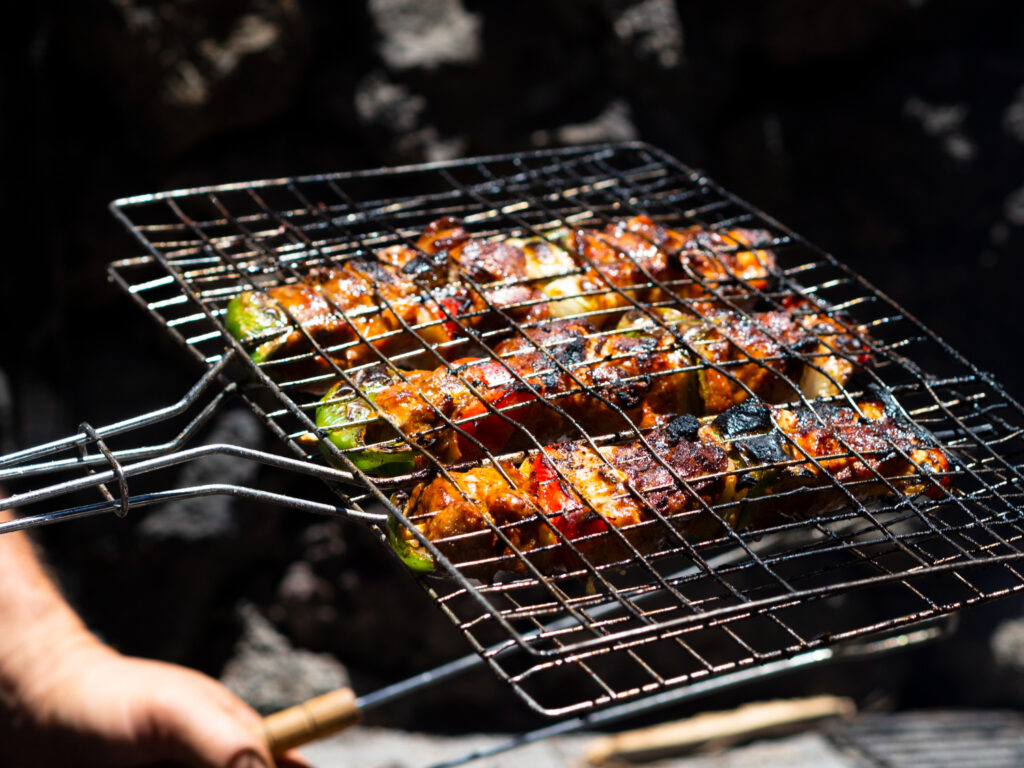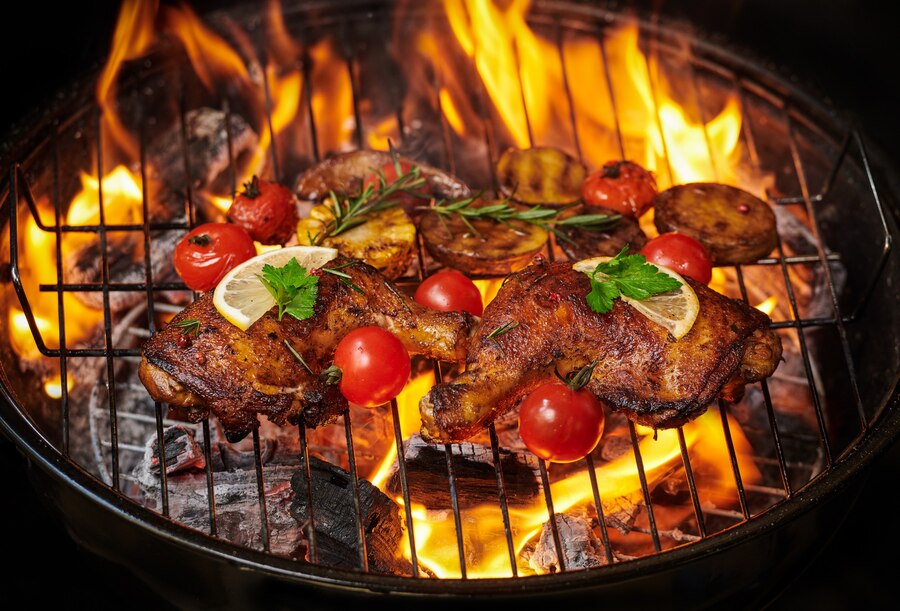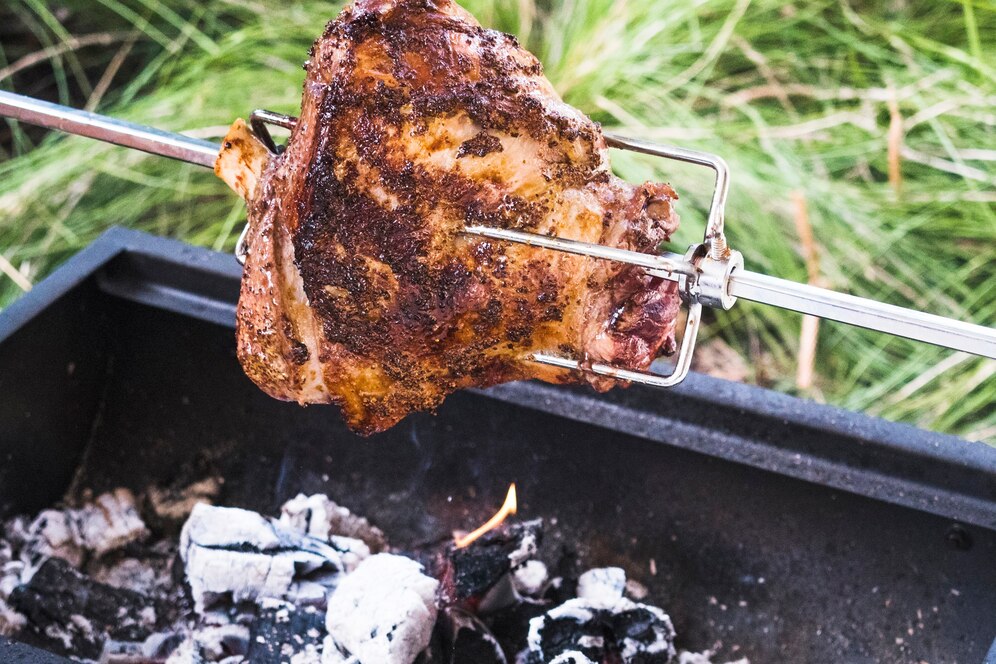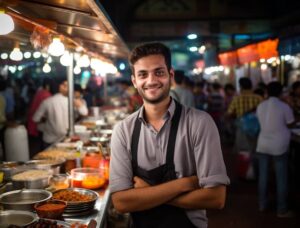The Food Blog

How to Use Open Fire & Charcoal Cooking Like a Pro
Nothing matches the smoky smell and deep flavour of food cooked over an open fire or smouldering coals. From perfectly grilled steaks to flame-kissed vegetables and low-and-slow BBQ, mastering these techniques will open up your kitchen to new possibilities.
But open fire and charcoal cooking is more than just sparking a flame. To hit restaurant-grade results, you must know the different techniques for controlling temperature and the best practices for managing fire.
In this guide, you’ll learn to cook like a pro using open fire and charcoal, including tips on fuel selection, temperature mastery, and global grilling techniques.
The Basics of Open Fire and Charcoal Cooking

Understanding the Heat Zones
Cooking over an open fire or charcoal involves managing heat zones effectively.
- Direct Heat Zone: This is the area directly over the flame or the hottest part of the coals. It’s ideal for searing steaks, burgers, and seafood.
- Indirect Heat Zone: This is the cooler area near the edge of the grill or away from the direct flame. It’s perfect for slow-cooking meats, roasting vegetables, or keeping food warm.
- Ember Cooking Zone: As the fire dies, the glowing embers create a consistent, medium heat, making them ideal for slow-roasting and baking.
Choosing the Right Fuel
The type of fuel you use significantly impacts the flavour and cooking performance.
- Hardwood Charcoal: Burns hotter and cleaner, with a pure smoky flavour. Ideal for steaks, pork chops, and burgers.
- Briquettes: Provide a consistent temperature and longer burn time, perfect for slow cooking and smoking.
- Wood Logs: Used in open fire cooking, adding a distinct smoky taste. Choose hardwoods like oak, hickory, and maple for optimal results.
- Fruitwood (apple, cherry, or peach): Ideal for grilling chicken, fish, and pork, infusing a subtle, sweet flavour.
Open Fire Cooking Techniques
Flame Grilling
Flame grilling involves cooking directly over the flames, giving food a charred exterior and smoky flavour.
Best for:
- Steaks, lamb chops, and kebabs
- Vegetables like peppers, mushrooms, and zucchini
Pro Tips:
- Let the flames die slightly before adding the meat to avoid excessive charring.
- Use metal skewers or grilling baskets to prevent food from falling into the fire.
- Rotate the food regularly for even cooking.
Cooking on Embers
Once the fire has burned, the embers create an even, consistent heat source perfect for slow cooking.
Best for:
- Whole fish or fillets wrapped in foil
- Potatoes and root vegetables
- Flatbreads or tortillas
Pro Tips:
- Bury foil-wrapped food directly in the embers for a smoky, roasted flavour.
- Use cast-iron skillets or griddles to retain heat and prevent direct charring.
- Let the embers glow red before placing food on them.
Spit Roasting
Spit roasting involves slowly rotating meat over an open flame, ensuring even cooking and juiciness.
Best for:
- Whole chicken, lamb legs, or pork shoulders
- Game meats (rabbit, venison)
Pro Tips:
- Use a motorised or manual rotisserie for even rotation.
- Baste the meat with herb butter or marinade to prevent it from drying out.
- Cook over medium heat embers for slow, consistent roasting.
Plank Cooking
Plank cooking is a technique where food is placed on a wooden plank and cooked over an open fire. The wood imparts a rich, smoky flavour to the dish.
Best for:
- Fish fillets (salmon, trout)
- Chicken breasts
- Vegetables
Pro Tips:
- Soak the wooden plank in water for at least an hour before grilling to prevent burning.
- Use cedar, maple, or hickory planks for added flavour.
- Cook over medium, indirect heat to avoid plank flare-ups.
Charcoal Cooking Techniques
Two-Zone Grilling
The two-zone grilling method creates a hot, direct heat area and a cooler, indirect zone on the grill. This setup offers more control over cooking temperatures.
Best for:
- Steaks, sausages, and pork chops (direct heat)
- Chicken thighs, whole fish, and roasts (indirect heat)
Pro Tips:
- Arrange the charcoal on one side of the grill to create the two zones.
- Sear the meat over direct heat, then move it to the indirect zone to finish cooking.
- Use a grill thermometer to monitor temperature fluctuations.
Reverse Searing
Reverse searing is a two-step technique that involves slow-cooking meat first over indirect heat, followed by a high-heat sear.
Best for:
- Thick steaks (ribeye, porterhouse)
- Beef roasts
Pro Tips:
- Cook the meat over low heat until it reaches the desired internal temperature.
- Finish with a quick, hot sear to develop a crispy crust.
- Let the meat rest for 5–10 minutes before slicing.
Low and Slow BBQ
The low and slow-BBQ method uses a charcoal smoker or grill to slow-cook meat over several hours, resulting in tender, fall-off-the-bone dishes.
Best for:
- Ribs, brisket, and pork shoulder
- Whole chickens or turkeys
Pro Tips:
- Use a water pan to retain moisture and stabilise the temperature.
- Add wood chips (hickory, mesquite, or applewood) for extra smokiness.
- Keep the temperature around 225–250°F (107–121°C) for best results.
Best Ingredients for Open Fire and Charcoal Cooking
Meats
- Steak cuts: Ribeye, sirloin, and porterhouse for quick grilling.
- Poultry: Whole chicken, wings, and thighs marinate well and develop crispy skin.
- Seafood: Shrimp, salmon, and tuna steaks benefit from smoky flavours.
Vegetables
- Corn on the cob: Grilled in the husk for a smoky, sweet taste.
- Bell peppers, onions, and mushrooms: Develop a charred, caramelised flavour.
- Asparagus and zucchini: Ideal for quick searing.
Seasonings and Marinades
- Use salt and pepper liberally before grilling.
- Marinate meats with olive oil, garlic, lemon, and herbs for added flavour.
- Finish with a sprinkle of smoked paprika or coarse sea salt.
Pro Tips for Fire and Charcoal Cooking Success
To achieve the best results when cooking over an open fire or charcoal:
- Preheat the grill or fire: Let the charcoal burn for 20–30 minutes until fully lit.
- Avoid flare-ups: Keep a spray bottle of water nearby to control flare-ups.
- Let the meat rest: After grilling, let the meat rest for 5–10 minutes to retain its juices.
- Use quality tools: Invest in long-handled tongs, meat thermometers, and grill gloves for safety and precision.
The Science of Open-Fire Cooking

Cooking over an open fire or charcoal grill is more than just a cooking method—it’s an art form that brings out the deep, smoky flavours in food. Whether you’re flame grilling steaks, slow-roasting BBQ, or using embers for vegetables, mastering these techniques will elevate your outdoor cooking skills.
Experiment with different global methods, use quality fuel and practice temperature control for consistently delicious results. Fire up your grill or build a campfire, and embrace the authentic joy of open-flame cooking.









